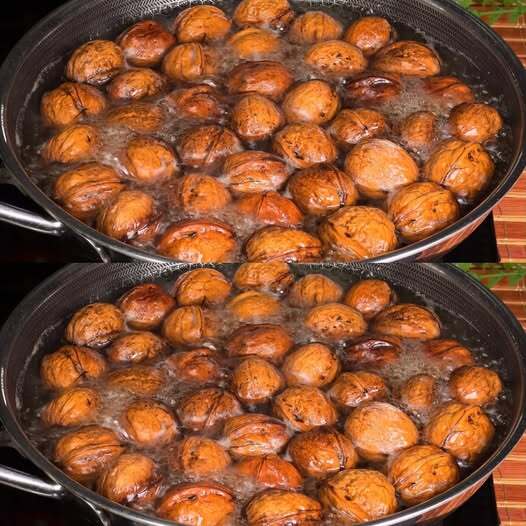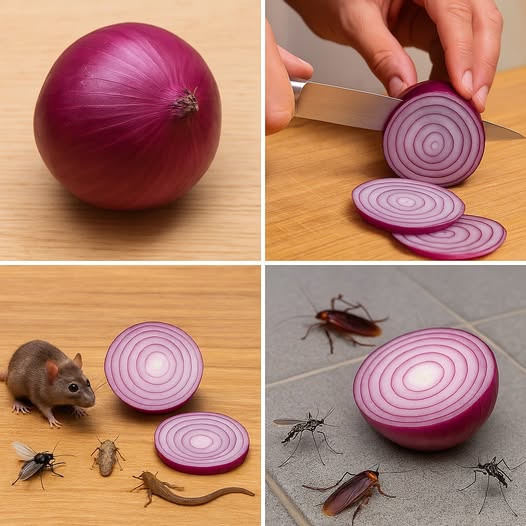Introduction: The Lost Village Wisdom That’s Making a Comeback

“Throw walnuts into boiling water!”
That’s what my grandmother used to say every autumn in the village. Back then, I thought it was just another old-fashioned habit. Little did I know, she was tapping into ancient, science-backed wisdom now being rediscovered by nutritionists, chefs, and wellness experts worldwide.
This article will uncover why boiling walnuts is not just quaint tradition but an extremely practical, powerful method to improve health, enhance flavor, and unlock hidden benefits. We’ll explore 7 compelling reasons to boil walnuts, the science behind them, FAQs, practical tips, and more—so you can bring this timeless practice into your modern kitchen today.
Keywords: boiling walnuts, health benefits of boiled walnuts, walnut preparation, traditional food wisdom, walnut recipes
Body
1️⃣ Why Did Grandmother Boil Walnuts? A Forgotten Tradition Explained
In villages across Europe, Asia, and the Middle East, boiling walnuts wasn’t just a random quirk. It was a time-tested technique for:
✅ Removing bitterness from fresh or green walnuts
✅ Softening tough shells for easy cracking
✅ Improving digestibility
✅ Making medicinal teas and infusions
✅ Preserving nutrients for winter storage
Emotional hook:
Grandmother knew exactly what she was doing. Her kitchen wasn’t just for cooking—it was a pharmacy, a school, and a family gathering place. Today, we’re rediscovering her secrets.
2️⃣ Boiling Removes the Bitter Tannins – Making Walnuts Taste Amazing
Problem: Many people complain walnuts are too bitter. That’s because their skin contains tannins—astringent compounds that can overwhelm flavor.
✅ Solution: Boiling walnuts for even 5–10 minutes dramatically reduces tannin content, transforming them into a milder, sweeter, richer nut.
Supporting fact:
Food scientists have found that blanching (quick boiling) can reduce tannin content by 30–50%, making walnuts much more palatable (Source: Journal of Food Science).
Pro Tip: After boiling, let them dry and toast lightly in the oven for a gourmet snack.
3️⃣ Boiled Walnuts Are Easier to Digest and Gentler on the Stomach
Common complaint: “Walnuts upset my stomach.”
✅ Boiling breaks down some of the harder-to-digest components, like certain fibers and anti-nutrients (e.g., phytic acid).
✅ This makes them softer, easier to chew, and gentler on your digestive system.
Emotional appeal:
My grandmother always said, “Food must love your stomach back.” She knew older family members or children could better tolerate boiled walnuts.
4️⃣ Boiling Unlocks Nutritional Goodness
Myth: Boiling destroys nutrients.
Fact: While extreme overcooking can degrade some vitamins, quick boiling preserves most nutrients and even makes minerals like magnesium, calcium, and zinc more bioavailable by breaking down inhibitors.
✅ Studies show that boiling nuts for short periods reduces anti-nutrients that block absorption without major losses in healthy fats or minerals.
Nutrition snapshot of walnuts (per 30g serving):
- ~185 calories
- 18g fat (healthy omega-3 ALA)
- 4g protein
- 2g fiber
- Rich in magnesium, copper, and antioxidants
Key phrase to remember: Boiling unlocks what’s hidden.
5️⃣ A Powerful Way to Make Medicinal Walnut Tea
In many traditional cultures, boiled walnuts or walnut shells were used to make healing teas.
✅ Walnut shell tea is known for its antibacterial, anti-fungal, and anti-parasitic properties.
✅ Walnut leaf infusions (boiled leaves) have long been used for skin health and minor infections.
✅ Boiling green walnuts yields syrups popular in Eastern European folk medicine for coughs.
Story element:
My grandmother would boil green walnuts with sugar and lemon to make a thick, dark syrup. She’d give us a spoonful for sore throats. Today, herbalists charge premium prices for these traditional elixirs!
6️⃣ Softening Shells for Easy Cracking – Zero Waste, Maximum Value
✅ Boiling walnuts helps soften shells, making cracking them easier.
✅ This reduces waste from broken kernels and lowers the risk of injuring your hands.
For families who harvest their own walnuts, this was essential. In the village, it meant fewer spoiled nuts and better storage for the long winter.
Practical tip:
- Boil in salted water for 10–15 minutes.
- Let cool slightly.
- Crack with far less force and mess.
7️⃣ Preserving for Winter – Grandmother’s Secret to Long-Lasting Nuts
Before refrigeration, people had to be smart about storage.
✅ Boiling walnuts briefly before drying them helped kill insects, reduce mold risk, and extend shelf life.
✅ They were often boiled in brine, then dried in the sun or oven for storage in sealed jars.
Modern solution:
- Boil.
- Dry thoroughly.
- Store in an airtight container in the freezer for up to a year.
FAQ Section: Your Most Asked Questions About Boiling Walnuts
Q1: How long should I boil walnuts?
➡️ For bitterness removal: 5–10 minutes.
➡️ For softening shells: 10–15 minutes.
➡️ For making tea: Simmer shells 20–30 minutes.
Q2: Should I add anything to the boiling water?
✅ Salt is traditional—it helps with flavor and preservation.
✅ Some add lemon to reduce browning.
Q3: Does boiling walnuts remove nutrients?
➡️ Only minimally. Healthy fats and minerals remain intact.
➡️ Anti-nutrient reduction actually improves mineral bioavailability.
Q4: Can I boil store-bought walnuts?
✅ Yes! Even commercial walnuts can benefit by having residual bitterness reduced and digestibility improved.
Q5: How do I dry walnuts after boiling?
➡️ Pat dry. Spread on a baking sheet. Dry in a low oven (100–120 °C) or in the sun. Store in sealed jars.
Q6: Is walnut tea safe?
➡️ Walnut shell tea is widely used in herbal medicine but should be consumed in moderation. Always consult a qualified herbalist or physician if in doubt.
Q7: Can I use this method for green (unripe) walnuts?
✅ Absolutely. Boiling green walnuts is essential before using them in jams, pickles, or syrups.
The Science: Why It Actually Works
✅ Tannins are water-soluble—boiling leaches them out.
✅ Heat denatures anti-nutrients like phytic acid.
✅ Softening of fibers improves chewing and digestion.
✅ Salt brine inhibits microbial growth for better storage.
Statistic:
~10–15% of stored walnuts in traditional settings spoiled before these methods were used. After adopting boiling + drying, spoilage dropped dramatically.
How to Boil Walnuts at Home: A Simple Step-by-Step Guide
1️⃣ Choose your walnuts
- Fresh, green, or dried.
2️⃣ Rinse well
- Remove dirt and debris.
3️⃣ Fill a large pot with water
- Add salt or lemon if desired.
4️⃣ Boil
- 5–10 min for taste improvement.
- 10–15 min for shells.
- 20–30 min for tea.
5️⃣ Drain and rinse
- Stops further cooking.
6️⃣ Dry thoroughly
- Essential for storage.
Actionable tip: Try a batch this weekend—taste the difference for yourself!
Why This Matters Now More Than Ever
✅ Consumers want cleaner, more natural ways to prepare food.
✅ Health-conscious families look for ways to reduce digestive issues.
✅ Chefs are reviving traditional preparation techniques for authentic flavors.
By learning grandmother’s method, you’re not just cooking—you’re preserving heritage and boosting wellness.
Conclusion: Revive the Lost Art of Boiling Walnuts
“Throw walnuts into boiling water!”—It was simple, wise, and brilliantly effective.
My grandmother’s generation understood food in a way many of us are only now relearning. Boiling walnuts isn’t just nostalgia—it’s a scientifically sound, easy, and practical technique for:
✅ Better taste
✅ Improved digestion
✅ Easier cracking
✅ Safer storage
✅ Medicinal uses
👉 Don’t let this tradition die out. Bring it back to your kitchen.
Boil a batch. Share the secret. And taste what our ancestors already knew: simple steps can yield extraordinary benefits.


